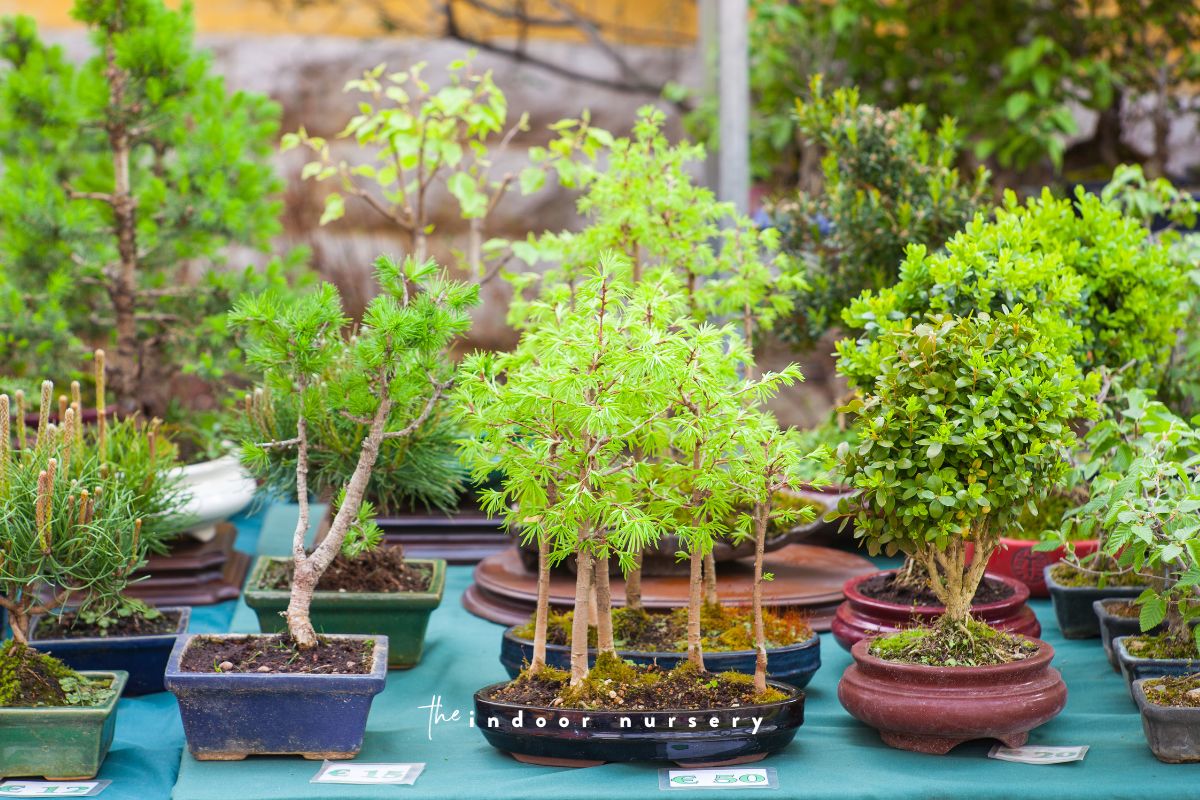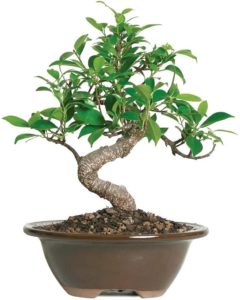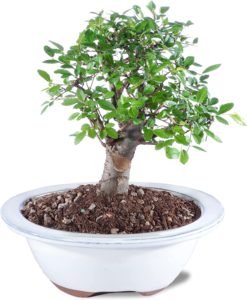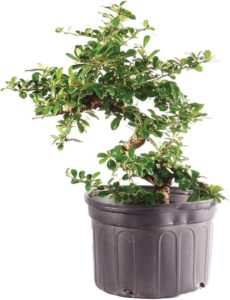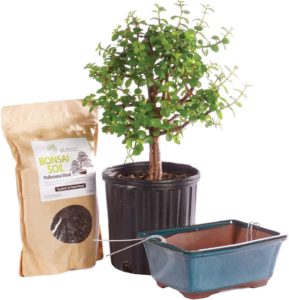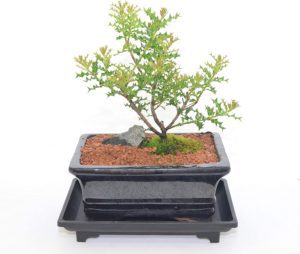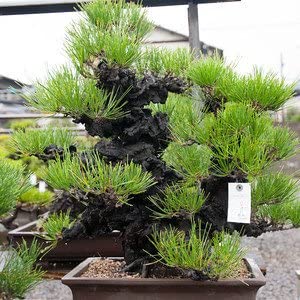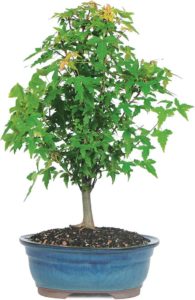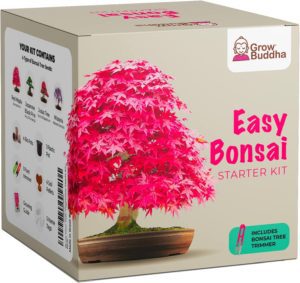Bonsai is the art of cultivating, dwarfing and developing plants into aesthetically appealing miniature trees by pruning and training them in small containers.
Bonsai enthusiasts dedicate a good portion of their lives to this indoor gardening hobby as many bonsai trees, just like their ancestors, live for decades and even centuries.
There are many types of tree species that are good for growing bonsai indoors.
I’ll go through some of the community favorites and what to know about them in this post.
ficus bonsai
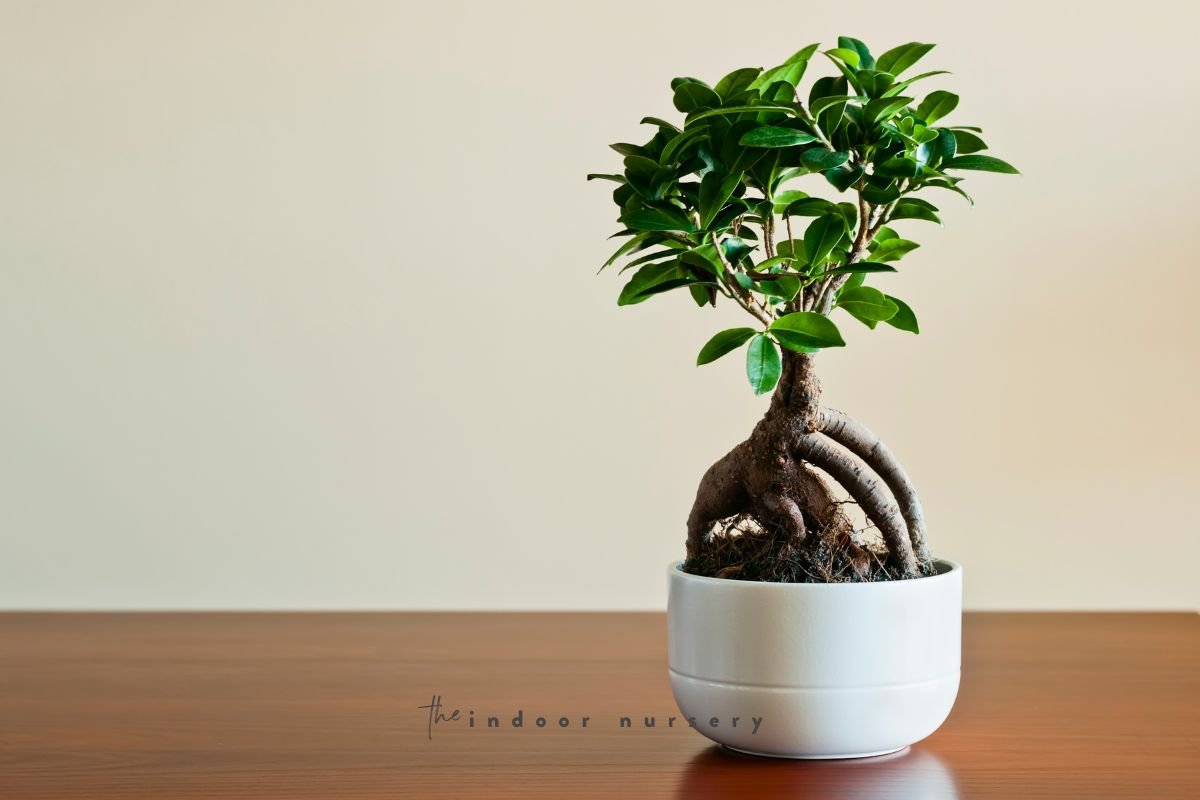
Ficus plants are already popular among indoor plant parents because they’re hardy, easy to grow, and adaptable. This is what makes them great bonsai plants too.
Ficus bonsai plants like sunlight just as much as outdoor tree varieties, so these do well next to a sunny window. If you’re new to indoor bonsai trees, then the ficus bonsai is an easy start.
chinese elm bonsai tree
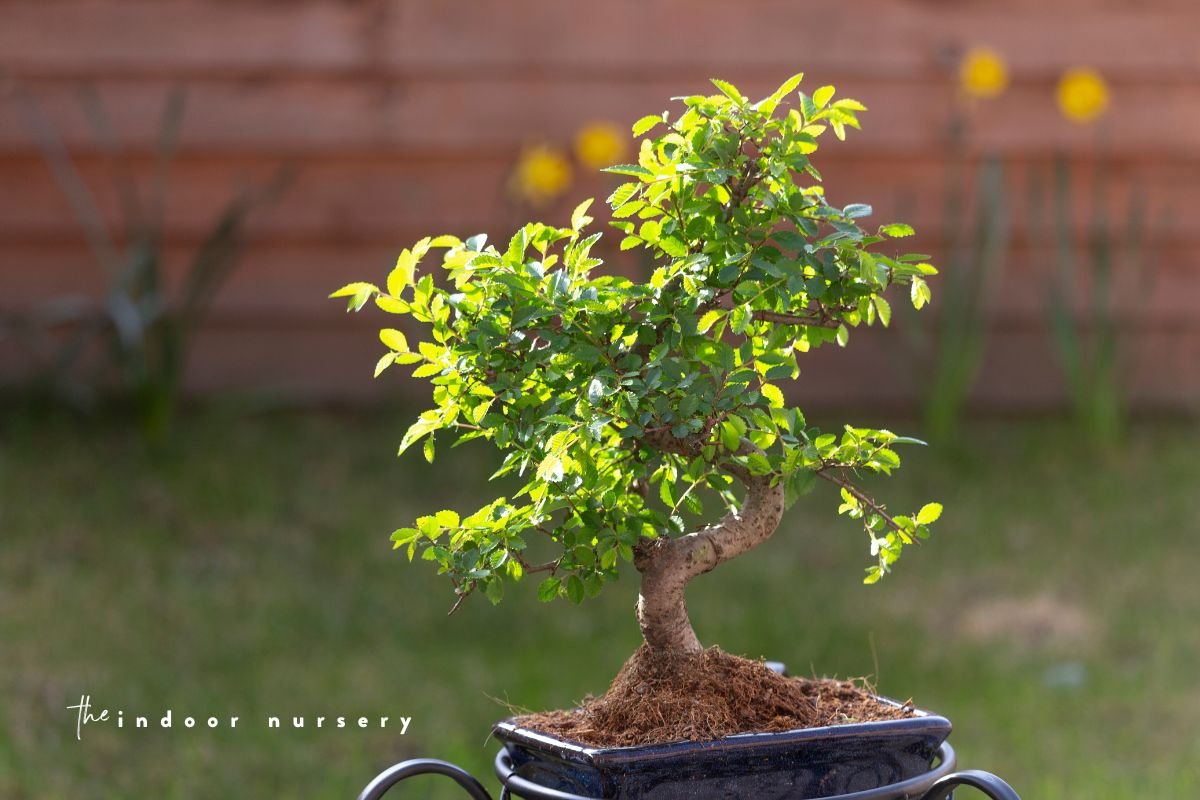
Chinese elm bonsai tree is great for novice bonsai enthusiasts because it is hardy and relatively fuss-free. It likes warmer climates and can even sit outside happily during the summer. This bonsai tree species is popular as an ornamental addition to outdoor gardens because of its hardiness. If you have harsh winters, then it’s important to consider the climate before committing to a Chinese elm.
fukien tea bonsai
The Fukien tea tree is another bonsai species that thrive in warm climates. It also likes a lot of sunlight, so placing your Fukien tea bonsai next to a bright window or outside where there is lots of sunshine will keep it happy. In fact, many places in North America may get too cold and dark in the winter for this sun-loving bonsai plant.
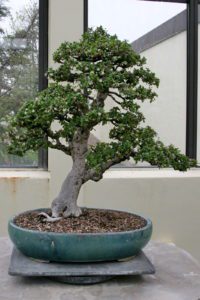
jade bonsai
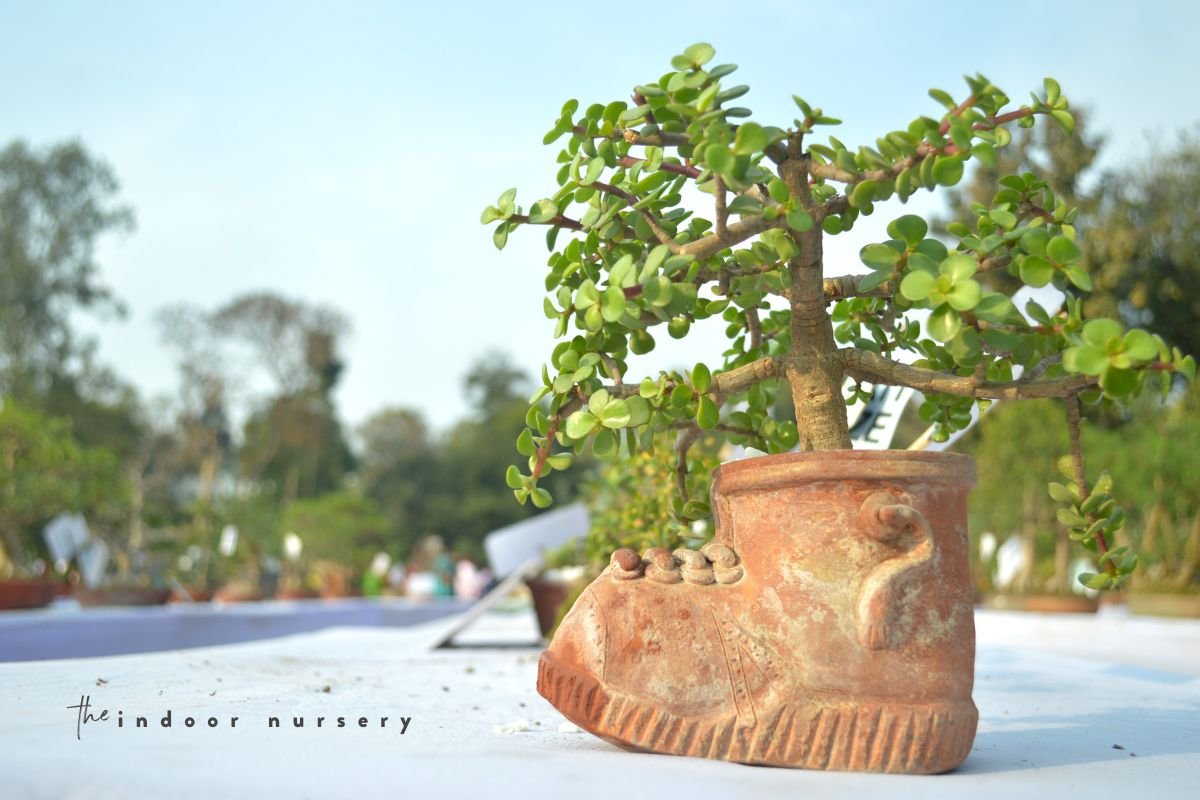
Jade plants are meant for warm, sunny conditions and so it’s no surprise that the jade bonsai tree does too. Without enough sunlight, this sunny species will begin to lose its luster. As you can imagine, jade bonsais love warmer weather. If you have space on a window shelf for plants or on your balcony garden, then a jade bonsai plant will settle there happily.
PRO TIP: These make great gifts for plant lovers 😉
okinawa holly
This smaller version of the Holly tree produces beautiful pink flowers during summer and spring. The Okinawa Holly is native to Japan, among several other countries in the Northern Hemisphere. With its hardiness, extraordinary appearance and miniature size, this species is a suitable choice for growing bonsai. Moreover, beginners will appreciate the ease of cultivating and maintaining the enchanting look of the tree. On average, this type of bonsai tree can grow about 5 to 6 inches in height.
While the Okinawa Holly is quite hardy, it can thrive well in temperatures that range between 60 and 85 degrees. You may use fertilizer to enhance the tree’s growth, but you should reduce the strength by at least 1/3 of what is recommended by the manufacturer. The right time to apply fertilizer is twice monthly every spring and fall. During the winter months, you should only fertilize the plant once per month. Lastly, you should re-pot the tree every year at springtime, so you can maintain its excellent condition.
japanese white pine
The Japanese White Pine is the perfect choice for those who prefer a strikingly attractive bonsai plant for their home. In the wild, this dense and sturdy tree can grow up to 50 feet in height. However, pruned and trained ones can become a remarkable bonsai tree. What makes this specie a popular option among bonsai enthusiasts is its irregularly shaped body, broad and spread out canopy, and twisted needles with green or bluish tufts on their tips. This appealing and hardy plant is indeed a fine choice for beginners and experienced bonsai masters.
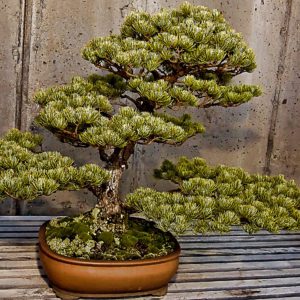
It is important to note that this type of bonsai tree requires full sun and cooler climates. You also need to make sure that it has good drainage and make sure you use fertilizer monthly during early to late spring. Before winter comes, this tree will need a slow-acting fertilizer to support its growth and development. The common solution for the fertilizer is 20-20-20, although this still depends on the acidity of your bonsai soil mixture.
trident maple
This stunning deciduous tree is suitable for bonsai cultivation because of its fascinating colors of foliage during fall, which may range from bright red to faded orange. In addition, the tree is quite bushy at the top part and has a thick and sturdy trunk. The Trident Maple also has a soft brown-colored bark that comes with a dappling effect. Its small leaves are grouped close together toward the tree’s top portion, which is why this specie is called the “Tri-dent” Maple tree.
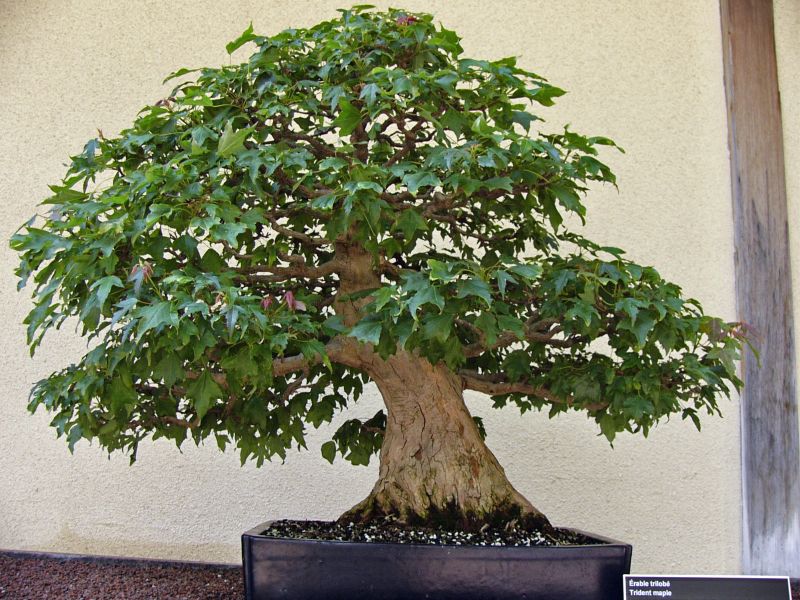
One benefit of cultivating the Trident Maple for bonsai is its speed in reaching maturity, as compared to other species. When full-grown, the tree looks remarkable because of its refined quality. Most people also prefer to use this type of tree because it is easy to style. It works well with a number of styles such as twin trunks, formal or informal upright, forest, and rock-over-rock. Keep in mind that the soil used for this tree must be free-draining, and it is advisable to repot the tree yearly in the early spring. You should wait until the buds start to swell before you re-pot it, and feed the tree every week during spring and bi-weekly in late summer.
juniper bonsai tree
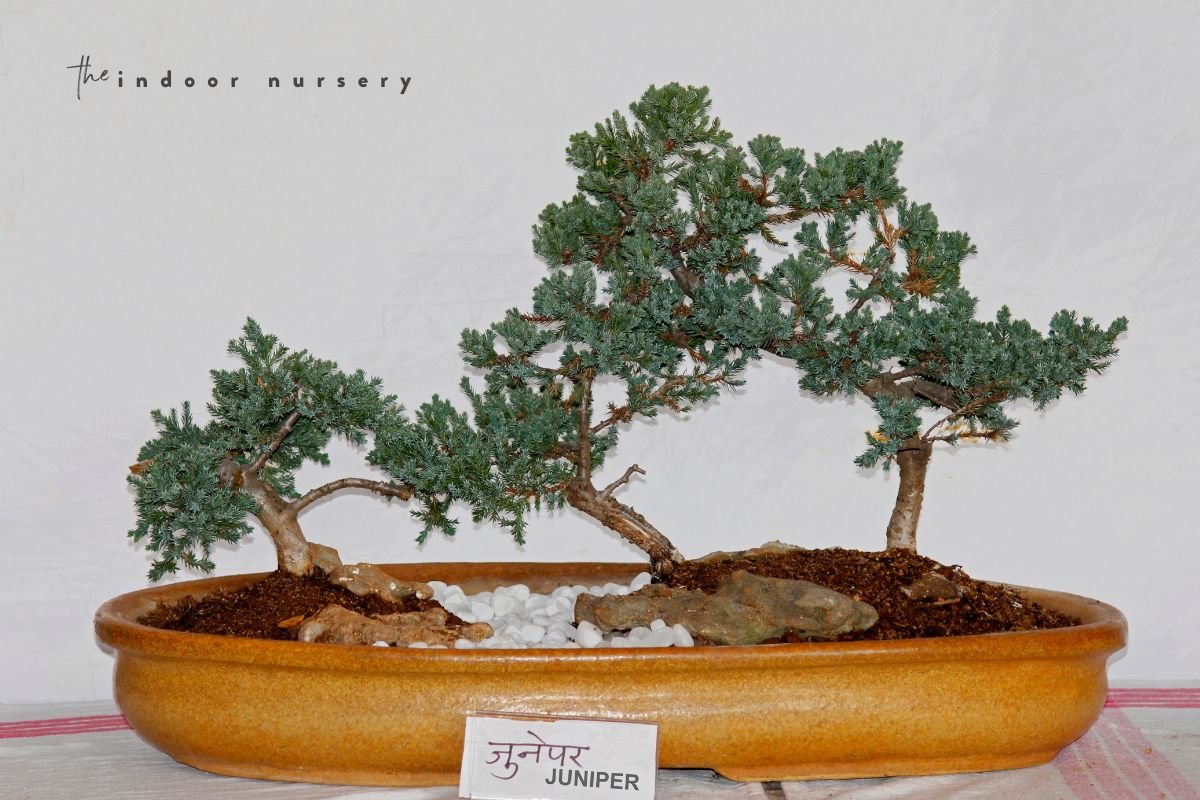
This hardy conifer is a non-flowering tree specie that is very easy to train and prune. Thus, the Juniper makes an excellent option for bonsai gardening. It is also known for rapid growth patterns, and it produces flowing and long branches that you can train using a wide range of bonsai styles. The tree’s branches responds amazingly well to reshaping and wiring, although there are some species of this tree that may have stiffer branches.
Most bonsai enthusiasts choose the Juniper for bonsai because of its hardiness, and you can place the tree outdoors or indoors. However, you should avoid placing it in an area that is below 59 degrees. If you plan to grow the tree outdoors, make it a point to protect the root ball or newly-trained Juniper from frost. Additionally, you should be careful when training the tree because its needles can cause allergic reactions. Thus, you should wear gloves to prevent redness and itchy rashes on your skin.
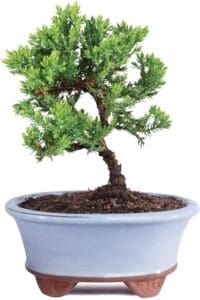
japanese maple
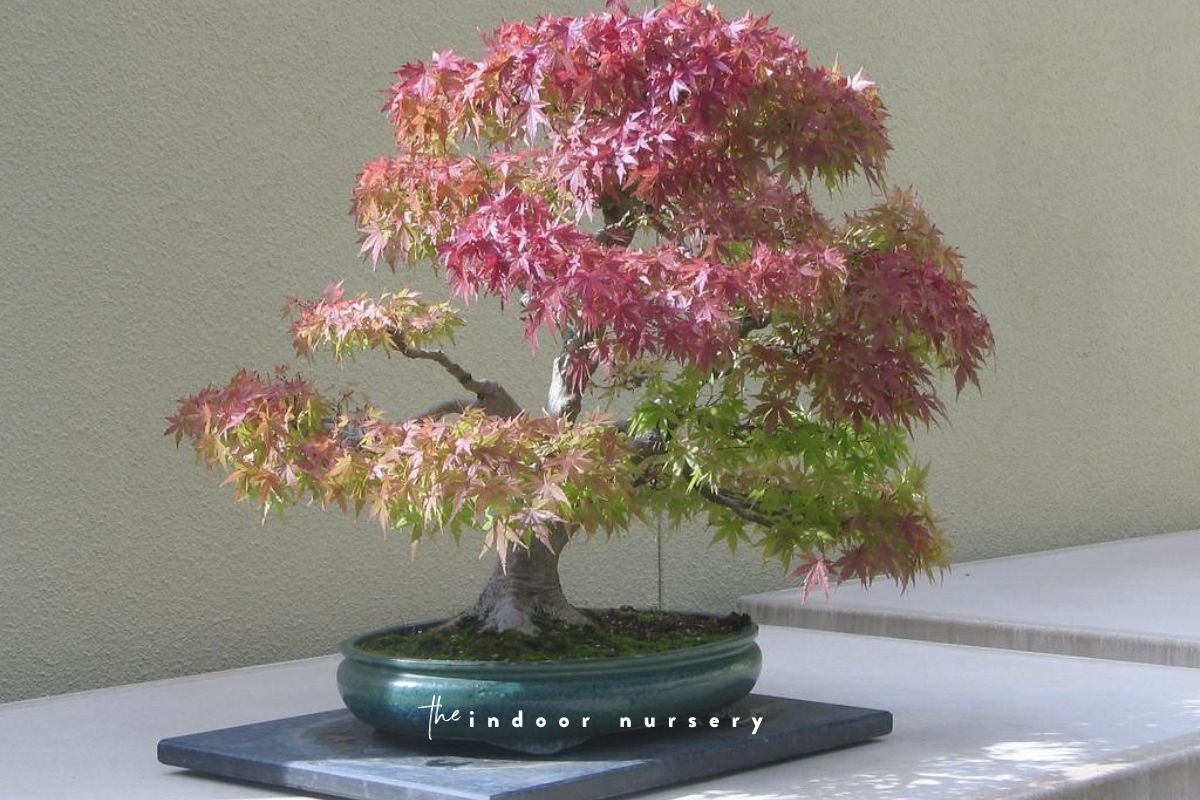
The Japanese Maple is known for its compact trunk, delicate foliage, and beautiful colors. During fall, the tree’s leaves turn into gorgeous colors such as gold and red, which can enhance the beauty of your garden. The tree needs to be placed in a semi-shady place during the summer months, and make sure it is protected from the wind. Springtime is the perfect time of the year to do most of the pruning, and make sure you pinch back some unwanted shoots. The best way to know if the tree needs to be pruned is when new shoots have reached at least 4 nodes.
This bonsai tree must be fertilized during the latter portion of winter until early spring, and it also needs to be planted in well-balanced soil. As for the required amount of water, you should provide the tree with as much water that it needs. Keep its soil moist without over-watering the plant. This way, you can prevent leaf burn in case the soil starts to dry out completely.
With proper care, various types of bonsai trees can live for several years. By obtaining a deep understanding of what your plant needs to grow well, you can ensure its outstanding condition and striking beauty.
how to make an indoor bonsai tree
Indoor bonsai trees may be developed from cuttings, seeds, or from young trees that are transplanted into pots. Most bonsai trees stand at least 2 inches to 3 feet tall, and they are kept small by pruning roots and branches or by wiring trunks and branches to let them grow into your desired shape and size.
Whether you are a beginner or professional bonsai grower, these fascinating plant species are great options to choose from as you explore the rewarding hobby of bonsai gardening.
Learn how to care for bonsai trees.
learn more about bonsai plants
- How to keep bonsai leaves small
- How long do bonsai trees live? Longer than you.
- How to care for your Japanese black pine bonsai
- How to grow aqua bonsai (water bonsai)
- How to care for a Red Maple bonsai tree
- Pomegranate bonsai tree care guide for beginners
- 15 bonsai styles and shapes that will inspire you
- Bonsai palm tree care: How to care for palm tree bonsais

